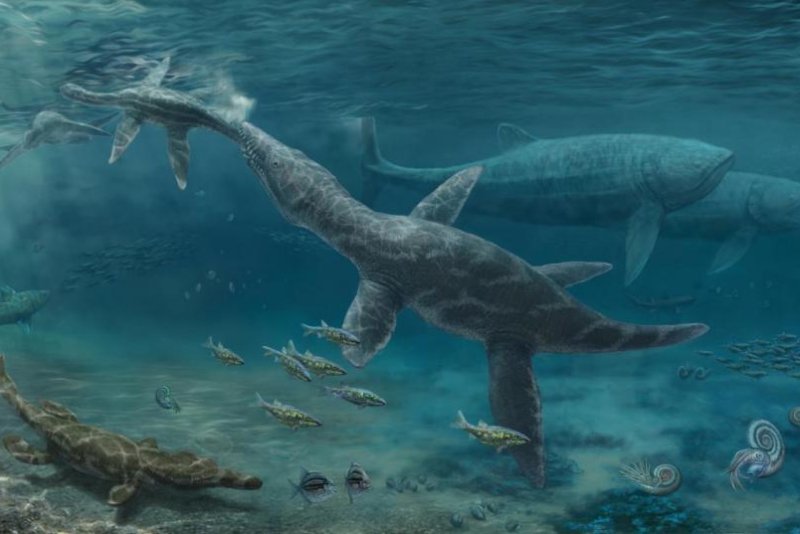Ancient sea level rise disrupted the diversity of marine ecosystems during the Jurassic period. Photo by Nikolay Zverkov
Sept. 4 (UPI) -- New analysis of fossil teeth have offered scientists new insights into the impacts of sea level rise on Jurassic food chains.
Sea levels rose considerably over the course of the Jurassic period, the 56 million years between the Triassic and Cretaceous periods. As revealed by the fossil record, some species thrived, while others were pushed to the margins.
To better understand the dynamics of this upheaval, scientists studied the shapes and sizes of teeth found among Jurassic strata along the coasts of England.
All of the teeth were sourced from marine sediments representing an 18-million-year period when sea levels fluctuated dramatically. The owners of the ancient teeth belonged to a diverse food chain called the Jurassic Sub-Boreal Seaway.
The analysis suggests the Jurassic Sub-Boreal Seaway resembled food chains found in the modern ocean, with apex predators like plesiosaurs and crocodiles co-existing with smaller species. The chain's diversity was made possible by a plethora of resources and species specialization.
The diversity didn't last, however. As the new research showed, rising sea levels reduced the numbers of shallow water species that used thin, piercing teeth to catch fish. Larger species, on the other hand, flourished.
Bigger marine reptiles, boasting stronger jaws and broader teeth, may have also benefited from shifts in ocean chemistry and temperature, researchers suggest.
Scientists shared their analysis this week in the journal Nature Ecology and Evolution.
"Studying the evolution of these animals was a real -- and rare -- treat, and has offered a simple yet powerful explanation for why some species declined as others prospered," Davide Foffa, geoscientist at the University of Edinburgh, said in a news release.
The findings could help scientists better anticipate how rising sea levels will impact food chains and ecosystems in the modern ocean.
"Teeth are humble fossils, but they reveal a grand story of how sea reptiles evolved over millions of years as their environments changed," Steve Brusatte said. "Changes in these Jurassic reptiles parallel changes in dolphins and other marine species that are occurring today as sea-levels rise, which speaks to how important fossils are for understanding our modern world."















